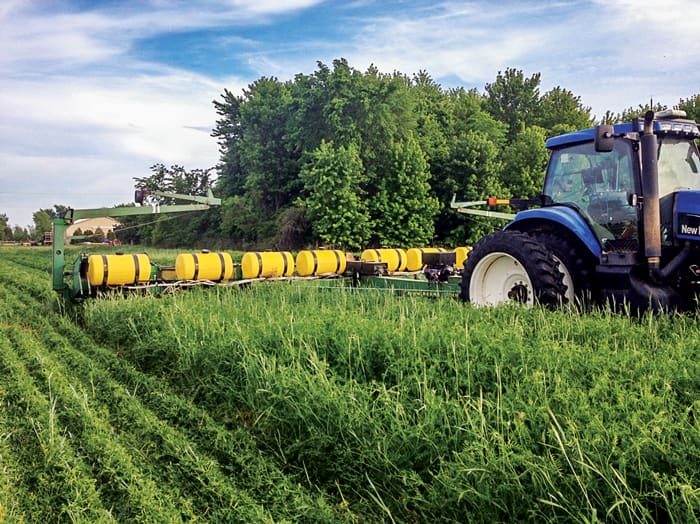By: Aaron Viner
With planting season kicked into full gear, some farmers are planting into fields that have already greened up.
With cover crops growing in popularity, it’s not uncommon to see a field full of green in early April. Planting corn or soybeans into rye or other winter crops has some benefits.
“Planting green requires a high level of management and attention to detail,” Steve Groff, owner of Cover Crop Coaching, wrote. “By planting green, the crop is allowed to grow longer, gain more biomass and could dry out soil in a wet condition.”
However, recent research from Iowa State University suggests not terminating cover crops ahead of planting could bring more disease and pests that may overwinter or start early.
“Planting corn into a green cereal rye cover crop may contribute to seedling disease and negatively affect corn growth, development and yield,” said Alison Robertson, Iowa State University professor of plant pathology and microbiology, in the report.
In the two-year study, spanning the 2019 and 2020 growing seasons, Iowa State researchers observed that corn seedlings were taller but had lower shoot dry weight. Overall yields were also smaller for the corn crop planted into cereal rye compared to fields where rye was terminated ahead of planting.
In 2019, the corn averaged 231 bushels per acre in terminated rye, with those figures dropping to an average of 210 bushels when planting green. In 2020, the difference was 188 bu./acre versus an average of 174 when planting into cover crops.
Robertson said radicle rot was also more severe in the fields where rye was terminated after corn planting.
Jenny Rees, with University of Nebraska Extension, said part of that may come from cover crops taking moisture that would otherwise go to the cash crop.
“The seed bed may lack moisture at planting, which is a risk for non-irrigated fields and those with irrigation allocations,” she said. “If irrigation is available, have the system ready to go before planting just in case.”
Groff said corn does tend to be harder to plant green than soybeans. Making sure enough nitrogen is available is key for the crop, and cereal rye may take up more of that nutrient.
“Assume no nitrogen is available at planting,” he said. “It’ll be there later in the season, but not early on. Some crops can suffer from nitrogen deficiency, which may cause worries about disease.”
When planting into a cover crop, having proper seed placement and sticking to a row can be difficult. That’s why he suggests newcomers to planting green start with soybean because it can be more forgiving, with research showing the yield loss tends to be significantly less than with corn.
“The best way to start is with soybeans,” Groff said. “The bonus you get with beans is providing control of herbicide-resistant weeds.”
Rees said a wet spring, such as 2022, could make for a good situation to plant green. Termination of cover crops may need to be done up to 14 days ahead of planting, which would cause extra delays in an already backed-up season.
“Killing the rye at least 14 days before planting may not allow for much rye growth or results in delayed planting,” she said. “Either way, that reduces the potential benefits from cover cropping.”





Post a comment
Report Abusive Comment